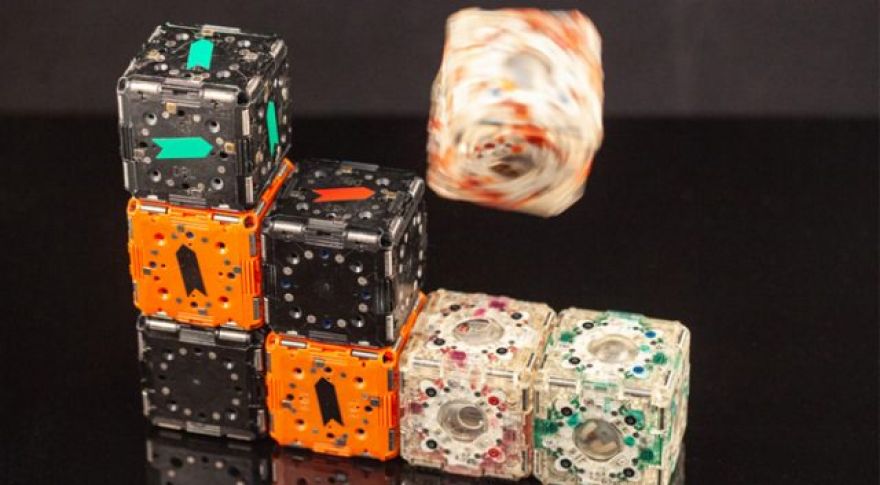
MIT’s M-Block Robots Roll, Jump, and Flip to Form Structures
We’ve seen engineers design some truly amazing robots that can walk, run, and even jump, but not all robots need to be so elaborate. MIT researchers have created a fleet of tiny robotic cubes that can move around and interact with each other autonomously. An individual “M-Block” robot is simple and not very useful, but if you bring the fleet together, they can .
The M-Blocks were designed at MIT’s Computer Science and Artificial Intelligence Laboratory (CSAIL) under the supervision of professor and CSAIL Director Daniela Rus. The project started back in 2013 with the aim of designing a more scalable robotic system that doesn’t rely on complex movement mechanisms.
Each cube-shaped has a flywheel that moves at 20,000 revolutions per minute. The robot applies a brake to the flywheel when it needs to move, harnessing the angular momentum to roll and hop across a surface. Each side also has permanent magnets that help it connect to other M-Blocks, and small barcodes on the faces help the robots identify each other.
The M-Blocks might not be as quick to reach a destination compared with a wheeled or walking robot. They can only move in one of the four cardinal directions but can do so from any of their six faces. That’s a total of 24 different movement directions. The cubes also have to launch themselves at each other and rely on the magnets to straighten out the collisions. Luckily, they can cover a lot of ground with each leap and can even climb up “walls” composed of other M-Blocks.
This simpler method of locomotion brings several advantages to the M-Block program. The individual robots are inexpensive and easy to produce because there are fewer moving parts. They’re also less likely to accumulate damage or need maintenance compared with more complicated robots with actuators to control limbs. The team believes this design is more scalable and could potentially reach as many as a million modules.
Rus envisions networks of M-Blocks that can work together to become whatever you need in a given situation. For example, M-Blocks could link up to become a temporary staircase to allow access to a building damaged by fire. Currently, the M-Blocks can only form simple shapes, but improved algorithms and communication between the blocks could help them perform more advanced tasks.
Now read: